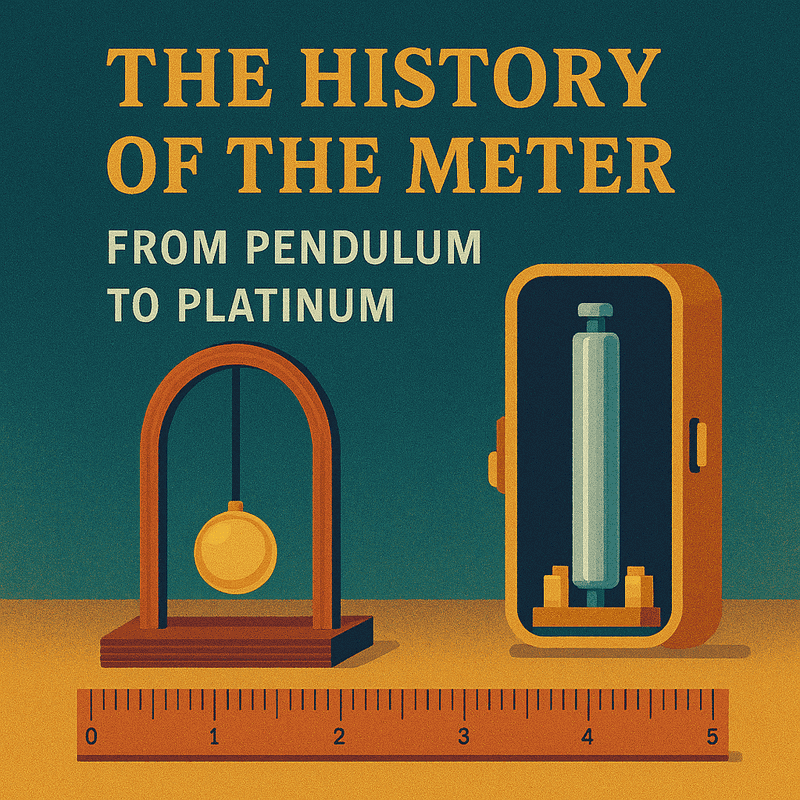
The meter, which serves as the fundamental unit of length in the International System of Units (SI), has a fascinating history that spans over two centuries. Its evolution reflects humanity's ongoing quest for precision and universality in measurement—a journey intertwined with scientific advancement, political upheaval, and international cooperation.
The story of the meter begins during the Age of Enlightenment and the French Revolution. In the late 18th century, as revolutionary France sought to replace old systems associated with the monarchy, the need for rational, universal standards became imperative. The chaotic array of measurements used throughout France and Europe at that time—with variations not only between countries but often between neighboring towns—complicated trade, science, and everyday life.
In 1790, the French National Assembly requested the French Academy of Sciences to create a standardized measurement system. The Academy's scientific commission, which included prominent figures like Pierre-Simon Laplace and Antoine Lavoisier, considered several possibilities for a standard unit of length.
Initially, they explored defining the meter based on a pendulum with a half-period of one second. This approach offered a connection to time measurement but was ultimately rejected due to variations in the pendulum's behavior at different latitudes, as the Earth's gravitational field is not uniform across its surface.
Instead, the commission made a revolutionary decision: to define the meter as one ten-millionth of the distance from the North Pole to the Equator along a meridian passing through Paris. This definition rooted the meter in the natural world, independent of any human artifact, aligning with the Enlightenment principles of rationality and universality.
To determine this distance accurately, the Academy dispatched two astronomers, Jean-Baptiste Delambre and Pierre Méchain, on an ambitious geodetic expedition to measure the meridian arc from Dunkirk to Barcelona. This remarkable seven-year endeavor, conducted amid the turbulence of the Revolution and subsequent wars, stands as one of history's great scientific adventures. Using techniques like triangulation and astronomical observations, they measured the meridian arc with impressive precision for their time.
Based on their measurements, in 1799, a platinum bar representing the first standard meter was created and deposited in the French National Archives. This artifact, known as the Mètre des Archives (Meter of the Archives), served as the official standard for the next 90 years.
As the 19th century progressed, the metric system gained international recognition, and in 1875, the Meter Convention was signed by 17 nations, establishing the International Bureau of Weights and Measures (BIPM) to maintain international standards. This marked a significant step toward global standardization and scientific collaboration.
Under the Convention, a new international prototype meter was created: a bar of platinum-iridium alloy with a precise X-shaped cross-section to maximize rigidity. This International Prototype Meter, kept at the BIPM near Paris, became the new definition of the meter in 1889.
However, scientists recognized that defining a fundamental unit based on a physical artifact had inherent limitations. Artifacts can be damaged, destroyed, or subtly change over time. The search continued for a more stable, reproducible definition based on universal physical constants.
In 1960, the meter reached another milestone when it was redefined in terms of krypton-86. The new definition stated that the meter was equal to 1,650,763.73 wavelengths of the orange-red emission line in the electromagnetic spectrum of the krypton-86 atom. This definition offered much greater precision and reproducibility than the physical artifact.
The advent of laser technology in the 1960s and 1970s provided even more precise measurements of the speed of light, leading to the current definition adopted by the General Conference on Weights and Measures in 1983: the meter is the length of the path traveled by light in vacuum in 1/299,792,458 of a second.
This definition represents the culmination of centuries of scientific progress. By defining the meter in terms of the speed of light—a fundamental constant of nature—the definition is both universal and incredibly precise. The speed of light is the same everywhere in the universe, making this definition truly universal.
The evolution of the meter's definition reflects broader trends in the history of measurement. From arbitrary human artifacts to natural phenomena, from local standards to international agreements, the meter's journey demonstrates humanity's increasing sophistication in creating precise, reproducible, and universal standards.
Today, the meter serves as the foundation for measuring length throughout the world. Its definition in terms of the speed of light ensures that it can be reproduced with extraordinary precision in any laboratory equipped with the appropriate technology. This precision supports not only everyday measurements but also cutting-edge scientific research, from nanotechnology to astronomy.
The story of the meter is more than just the history of a unit of measurement—it's a testament to human ingenuity, international cooperation, and the relentless pursuit of precision. From the revolutionary fervor of 18th-century France to the quantum precision of modern physics, the meter continues to evolve, always striving for greater accuracy and universality.